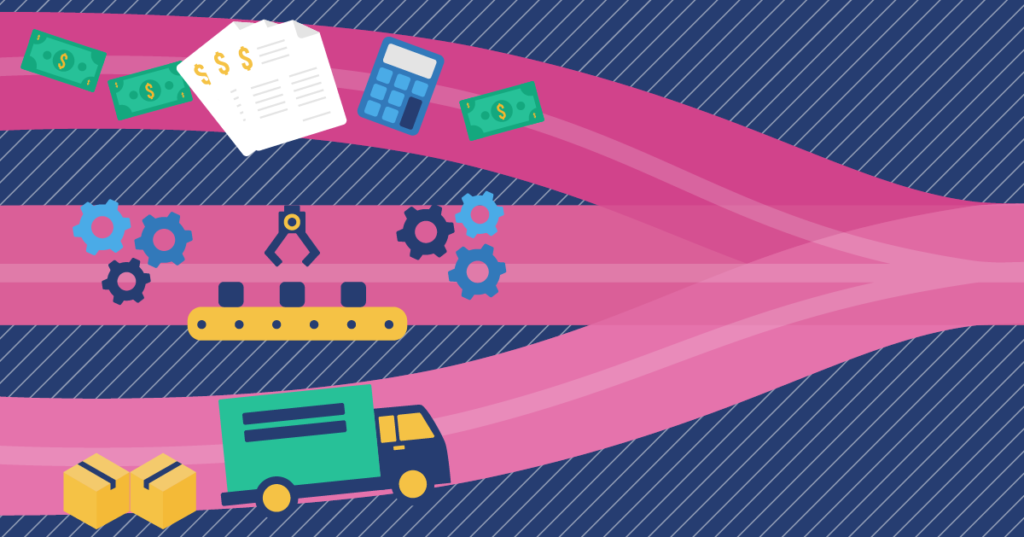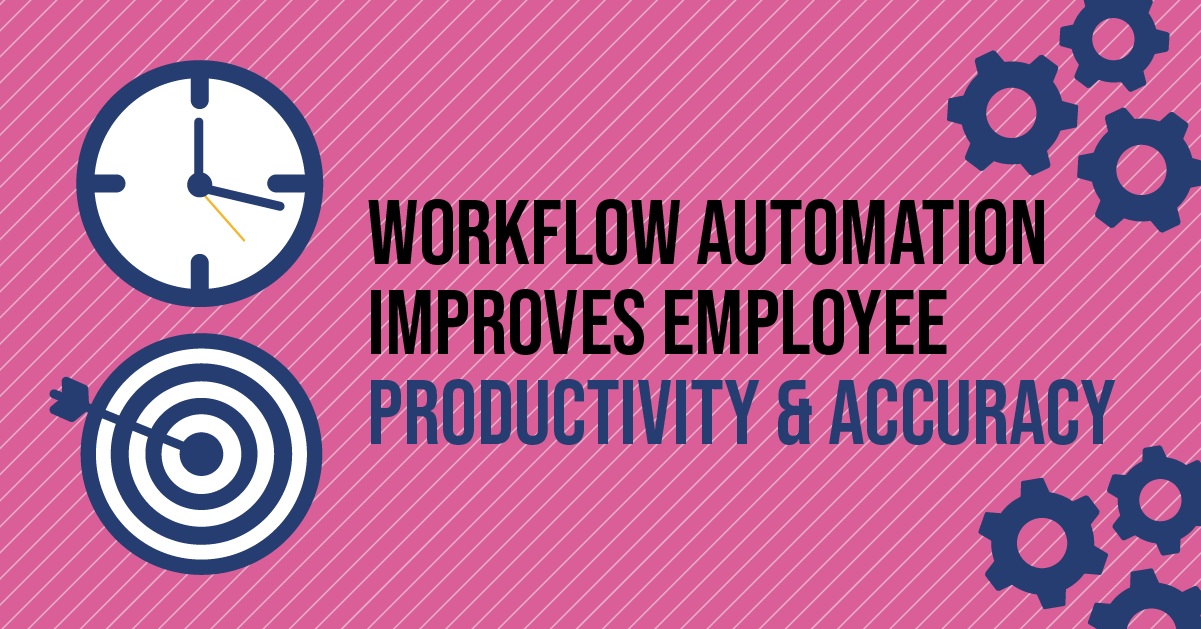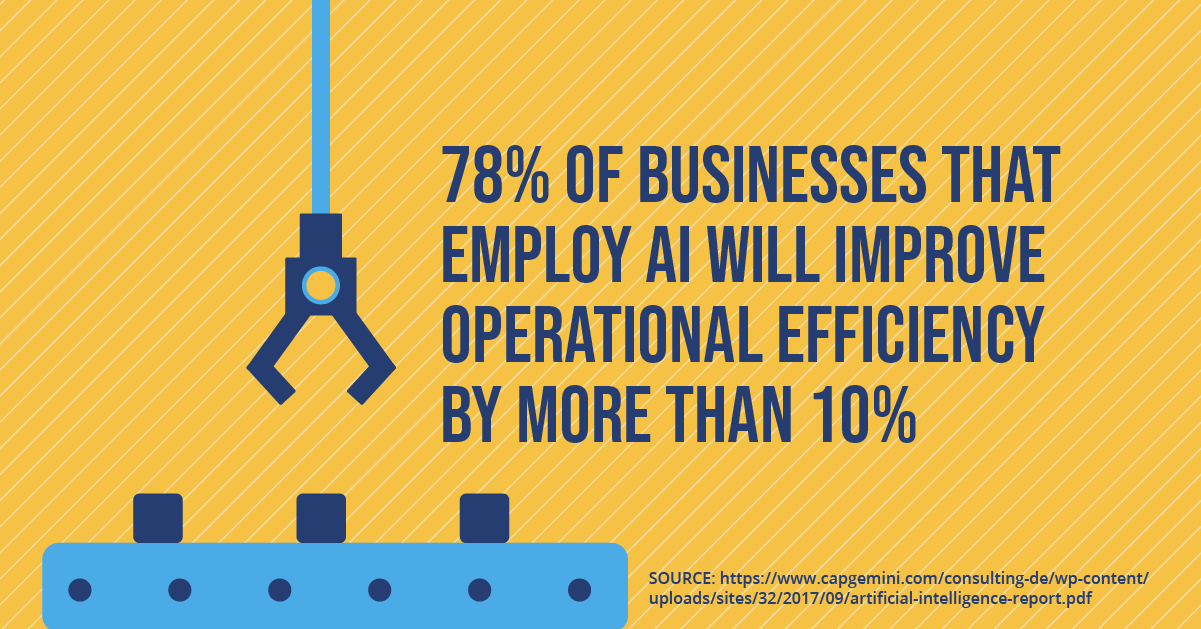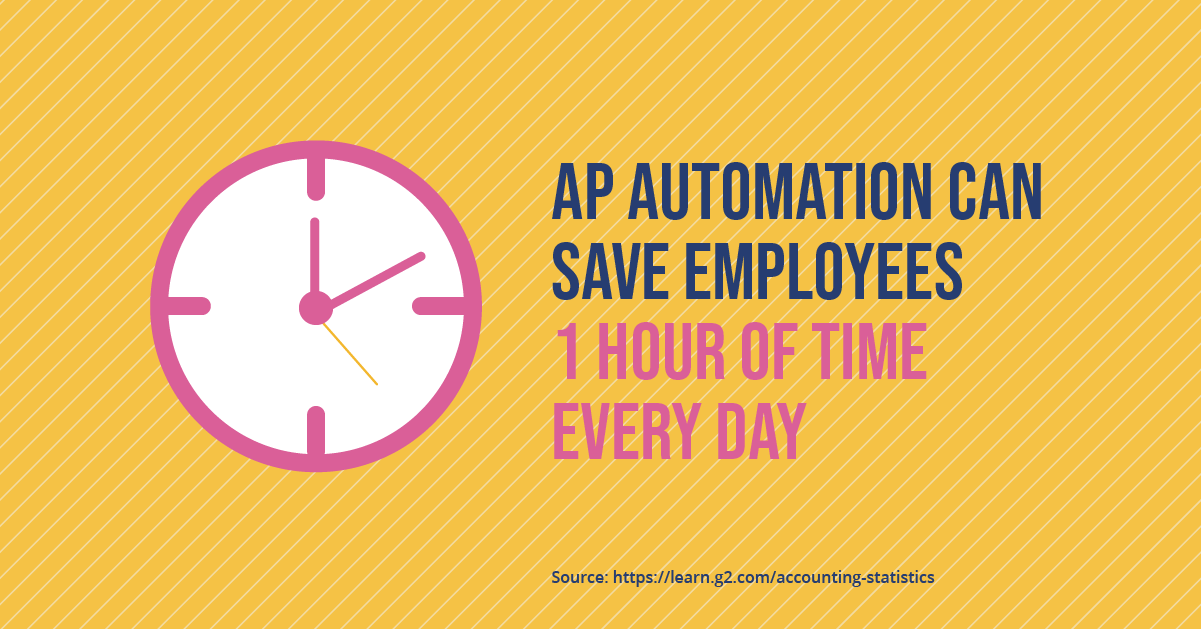How Artificial Intelligence (AI) Can Increase Your Operational Efficiency

In 2017, Netflix was facing a possibly fatal issue. They recently raised their prices, which contributed to a marked decline in subscribers.
The company was struggling to keep subscribers engaged with their content, especially as more streaming services entered the market.
Nearly three years later, it is clear that Netflix is not going anywhere. And their saving grace may have been their use of artificial intelligence, or AI.
Using AI-powered recommendations, they were able to suggest content users were likely to be interested in and use thumbnails that were more likely to engage specific viewers. So, you might see one thumbnail for the new Stranger Things, while your spouse might see another based on their specific viewing habits.
The results? Netflix’s use of AI is credited with helping them save over $1 billion dollars a year.
Granted, your business might be a bit smaller than Netflix. However, AI technology can still improve your operational efficiency and, most importantly, increase your bottom line.
What is Operational Efficiency and Why Does it Matter?
Operational efficiency is the act of improving all of the processes that support the production of your final product or service. This can include evaluating resource utilization, analyzing accounts payable processes, reviewing production efficiency, inventory management, and delivery and distribution.
Streamlining operational processes can result in big savings. For example, UPS created a navigation system for its drivers that determines the optimal route for deliveries based on factors such as what side of the building a loading dock is on and real-time traffic conditions. The AI-powered navigation system allows its drivers to deliver packages faster and more efficiently, saving an estimated $300 to $400 million each year.
Essentially, operations efficiency comes down to one core question: Can we produce the same level of product or service at a lower cost?
There are several ways to increase operational efficiency, including:
- Evaluating workflows to eliminate redundancies
- Streamlining distribution channels
- Evaluating and working to reduce production costs
- Streamlining equipment-based processes
- Automating manual processes
- Using technological solutions, such as AI and smart technology
If your business wants to remain competitive, particularly against large companies with more bargaining power, you must reduce inefficiencies and streamline operational processes as much as possible.
In today’s increasingly technological environment, AI solutions have risen to the top of the operational efficiency market. Brands that want to stay competitive would be well served to experiment with AI solutions to discover what will produce the best results.
Running a successful business requires more than just creating an innovative product or service and selling it at a profit. You also need to keep operations costs under control and make regular strives to improve overall efficiency. Let’s look at how AI can make it easier than ever to increase operational efficiency and save your business money.
Ways to Improve Operational Efficiency Using AI
The biggest gains from AI tend to come from using the technology on a large scale. For example, your business might decide to completely revamp your online ordering system using an AI chatbot, as Dominos did.
However, launching small scale improvements is often more successful, as it will allow you to see which solutions actually improve operations efficiency before investing thousands or even millions of dollars.
Consider the following ways that AI could improve your business’ operational efficiency.
Improve the Production Process
Businesses have long looked for ways to reduce production costs. With the rise of “smart factories,” however, these efforts have received a much needed boost. Using AI, manufacturing companies can collect samples and analyze data much faster, allowing them to find and eliminate production waste or inefficiencies fast.
McKinsey calls AI in the production process “a game-changer for manufacturers,” because it can reduce errors, standardize knowledge, and make complex operational decisions on its own.
For example, AI software with high-powered cameras could be used as part of the quality assurance process to prevent defects from reaching consumers. This could reduce the need for human QA specialists and allow staff to focus on more strategic tasks.
Solve Customer Service Issues
When customers have an issue, they expect the brands they spend money with to answer quickly. In fact, 82% of consumers expect a nearly immediate response to sales or marketing questions.
Which can be incredibly challenging to provide, unless you are able to staff your phones 24/7. This can be cost-prohibitive. Low-cost options, such as outsourced call centers, can create frustration and fail to provide customers with adequate service. If any of this sounds familiar, AI might be the solution you’ve been looking for.
Using AI, businesses can program a bot to answer common questions, suggest resources, and support customer engagement. This allows your business to provide top-notch customer service at any time of the day. AI can even provide Tier 1 support so customer service agents can focus on more complex problems.
This can result in shorter customer wait times and higher customer satisfaction.
Reduce Operating Costs
Operating costs, like rent, office supplies, travel expenses, and marketing costs, are a necessary part of running a business. And while some expenses cannot be reduced, there are many opportunities for reducing operating costs with smart technology.
Businesses often overspend on operational costs due to human errors, fraud, and general inefficiencies. Software powered by AI can take over a variety of manual processes, such as bidding for paid ads, and enhance reporting speed and accuracy. This gives executives access to more timely data to make smart business decisions.
For example, AI can provide real-time reports about marketing strategies, allowing you to cut off spending for an ad campaign that is clearly not performing as expected.
AI can also be used to predict when machines may break down so manufacturers can schedule preventative maintenance and reduce production downtime.
Improve Operational Efficiency via Workflow Automation
Workflow automation is all about making the lives of your employees easier so they can be more productive. Deploying workflow automation to everyday business processes via AI can reduce the number of manual tasks employees face, freeing them to spend more time on tasks that support your bottom line.
As a result, employees are able to get more done in less time, and often with improved accuracy.

For example, using an AI-powered virtual assistant, employees would no longer have to manually schedule appointments, meetings, or search for conference rooms. This could prevent double-booking meetings and help improve overall time management.
IT service requests can also be streamlined through self-service portals that allow employees to submit tickets to request services from both internal and external teams immediately. This can improve IT response times and decrease employee downtime.
Workflow automation also increases accountability, by centralizing communications and making it easier for executives to see real-time status updates, rather than requiring reports and meetings to check in on a project’s progress.
Increase AP Efficiency With Automation
The accounts payable department has shifted dramatically in the past few decades. In the past, the process relied heavily on manual processes—sending invoices, following up with vendors, and making sure executives provide the necessary approvals.
The rise of digital payments and invoice management systems made this process slightly easier, but the number of platforms and lack of integration between platforms meant AP employees were often still responsible for manual data entry, matching up PO with invoices, and obtaining approvals.
AP automation can slash invoice processing time, streamline communications, improve accuracy, and provide easy access to critical financial data. It can also help businesses stay more organized to prevent overdue payments.
For example, AP automation software can import invoices automatically from an email, code them correctly, assign it to the correct person for approvals, even verify and approve invoices. Plus, by creating a centralized hub for communications, anyone with specified user permissions can easily check on the status of an invoice.
By eliminating tasks and speeding up the process, AP automation can help businesses reduce AP labor costs and even save money by reducing mistakes and fraud.
Final Thoughts
When it comes to operational efficiency, the most critical factors will vary based on the nature of your business and your unique market. For example, if you use multiple vendors, then finding ways to reduce distribution inefficiencies may be the most beneficial to your bottom line. Alternatively, a business that uses just one vendor may be better served by reducing QA labor costs.
Increasing efficiency is about more than just saving money. In fact, costs should never be the main measure of efficiency. After all, you can save 100% on labor costs by firing all your employees, but you also won’t be able to deliver a product or service.
Instead, businesses need to look for ways to maintain or improve their service or production processes while spending less — and smart technology is one of the most effective ways to reach this goal.

